Essential Tips for Collection Care by Art Collectors
Includes valuable tips and 2 video links
By Scott M. Haskins, Fine Art Conservator, Author
I am very often in the houses of people who love and collect art. And I am always surprised at how often I see their treasured framed memorabilia and valuable artwork precariously hung on their walls… perhaps a nail or a screw in a plaster wall… no thought that they live in a zone of high risk for a shaking building from natural disasters… or even a sonic boom can do it for a flimsy small finishing nail in a plaster wall!!! This is great how-to info…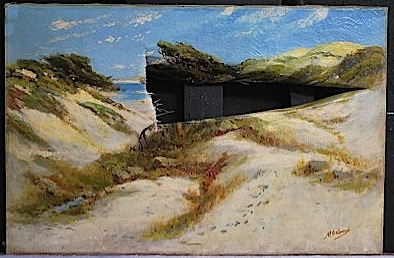
A sonic boom knocked this $20,000 painting off its small finishing nail.
Do you have framed artwork and paintings hanging on your walls? It could be a painting worth thousands of dollars or a certificate from grad school. It could be at home or in the office. Either way, it is valuable or important to you and should be hung properly so that it will not be the victim of the next earthquake, hurricane or party. Hundreds or thousands of dollars in repair to either the artwork and/or the frame can be easily prevented if you implement the following the guidelines in this article.
The Victorian framed art fell off the wall and onto the heads of these two very valuable Chinese heirloom statues… a huge emotional loss.
I understand that you will get your item back from a framer with the hardware already on the back. So, some of the info in this article is to help you speak with your framer about giving you an upgrade on your frame’s hardware.
There is a “system” for hanging something on the wall so it won’t easily fall off. These tips come from the book, How To Save Your Stuff from a Disaster, available on Amazon (CLICK HERE)

Save Your Stuff From a Disaster – the most widely distributed DIY preservation reference manual
Remember, that in this system, the weakest link is what will give away and your framed item will come crashing to the floor like the $20,000.00 painting by Manuel Valencia in the photo above (accept it came crashing down onto an end table with a lamp and collectibles on it). Consider putting the best quality and strongest hardware available (doesn’t cost that much more!) for everything on this list:
- wire attachment hardware on artwork or frame
- hanging wire
- hanging hook on the wall (the freebie hook the framer gives you may be WAY undersized!)
- utilize Museum Wax to anchor and secure to the wall.
Let’s talk briefly about each item on this list.
Wire attachment hardware on artwork or frame – picture hangers
I hate eye-hole screws. With time they wobble, they bend and work their way loose. I see frames with old eye screws that are on the verge of falling off ALL THE TIME. People often underestimate the size they should use and the weight of the artwork pulls/distorts the eye screw. They rust and they make the old wire rust and fray.
There are picture hangers that have a better design and require more than one screw to attach it to the frame (multiple attachments means greater safety). Here’s a photo of several sizes. The ONLY time I would use a single hole picture hanger is when I’m hanging a super light item that has a super thin frame.
An additional tip: if you have room to incline or angle the picture hanger to be the same angle as the hanging wire, it puts less stress on the wire. On big heavy paintings I even use two of these biggest hangers together on each side of the frame. BE CAREFUL: make sure your mounting screws don’t go through the front of your frame! CLICK HERE for video for tips on hanging really big heavy items.
There are two or maybe three types of hooks you should use:
- the brass one in the photo– made for plaster wall board; three nails spread into the plaster for a more secure hold; I always use the biggest 100 lb hook no matter how small the item is I’m hanging; use pliers to close the hook so the opening is barely open enough to get the wire in (so it won’t “jump” out as easy when the wall shakes); when I hang big heavy items I use two or three of these even though the item may not be 200 lbs (the important thing is that the hooks won’t pull out of the wall).
- the silver one in the photo – made for nailing into wood walls or a stud in the wall- needs one big nail. Don’t use this in plaster board. I always use the biggest 100 lb hook no matter how small the item is I’m hanging; use pliers to close the hook so the opening is barely open enough to get the wire in (so it won’t “jump” out as easy when the wall shakes); when I hang big heavy items I use two or three of these even though the item may not be 200 lbs (the important thing is that the hooks won’t pull out of the wall).
- There is a new plastic earthquake proof hook available on the market where the hanging wire can’t jump out, but if the nail pulls out of the wall then…
The Hanging Wire
Old wire is under-designed. The new wires are anodized and/or stainless steel which makes them about 10 x stronger than the old wires. Also, they are coated with an archival resistant plastic, which keeps the wire moisture free. One quality we like from United Manufacturing is called Framewire plastic coated hanging wire. Once again, I always overdesign and use an extra heavy wire that seems ridiculous. On big paintings, I’ll double or triple up. That’s a 1000 lbs of test strength for a 35 lbs painting in a frame!
Use an anchor wax – Museum Wax
Another great collection care tip is to anchor your framed artwork to the wall on the lower two corners. This will keep the artwork from jumping out of the hook if the building begins to shake and, more commonly, it will keep your frames from moving skeewampus on the wall and will keep you from having to “straighten” your hung frames.Remember, the weakest link in the chain is the one that breaks and causes the damage. These 4 parts ALL NEED TO BE REMEMBERED for hanging a painting on the wall in the most secure way:
- Quality and large picture hangers on the frame with more than 1 screw that hold the wire.
- Thick stainless steel wire, plastic coated
- Nail in wall hits a stud. If not, use a multi nail hanger made for drywall.
- Use the largest hanging hook possible
- Use Museum Wax in the lower two corners to anchor the painting against the wall and so it won’t “jump” off the hook when things start to shake.
“Overkill” is the operative word here. Remember, you are designing this to withstand an earthquake… or your grandkids! You do the math; be a good curator of your collection or file an insurance claim for $4,500.00 (deductible?) to repair the damage to look perfect again… and still have a reduction in value.
There is a “system” for hanging something on the wall so it won’t easily fall off. These tips come from the book, How To Save Your Stuff from a Disaster, available on Amazon (CLICK HERE)
Best wishes with your collecting!
Other collection care articles and videos you may be interested in:
- Repainting a ripped painting: https://www.youtube.com/watch?v=g2Jxozdtl0w&t=1s
- Time lapse video of cleaning a painting by Edgar Payne: http://www.youtube.com/watch?v=-DSzHcEBZ40
- Hidden signatures found with IR: http://www.youtube.com/watch?v=rWNshrFvl98
Art conservation questions: Call Scott or Virginia, Art Conservators at 805 564 3438
Art appraisal questions? Call Richard, Appraiser at 805 895 5121
Follow us on Facebook at
Fine Art Conservation Laboratories
#SaveYourStuff #FineArtConservationLab #ScottMHaskins #FixARippedPainting



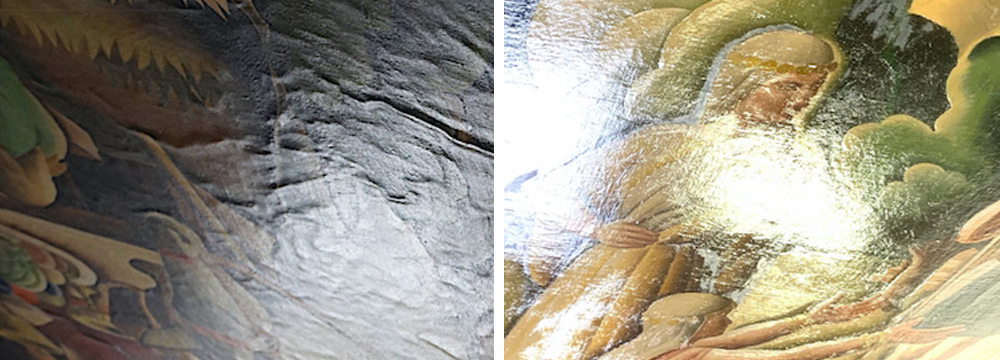



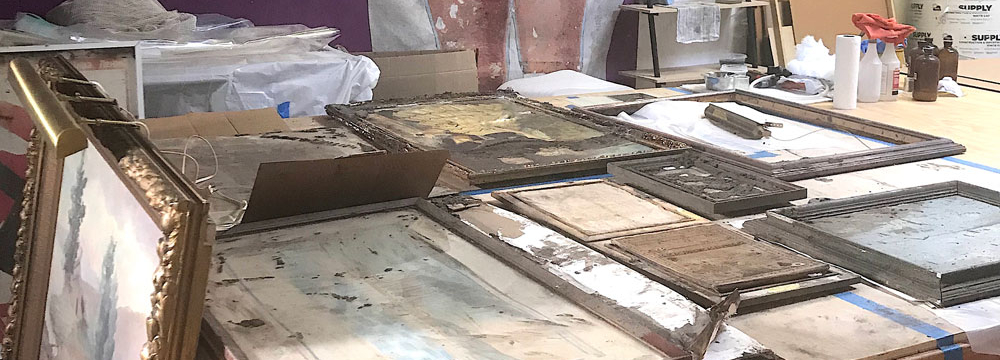


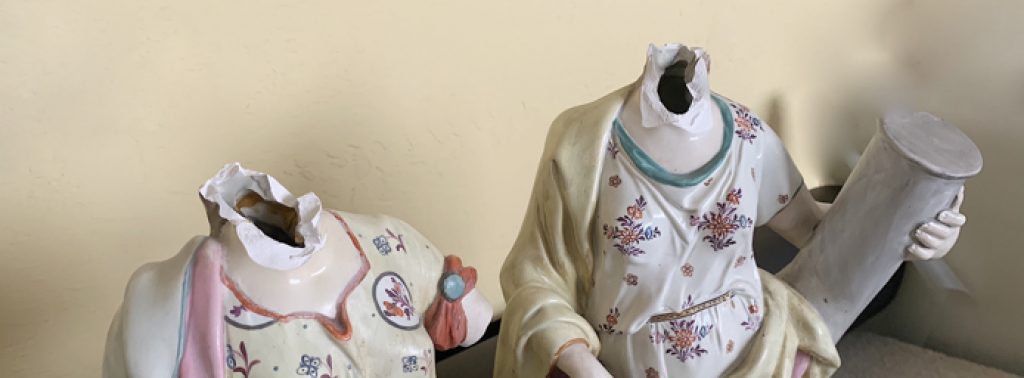
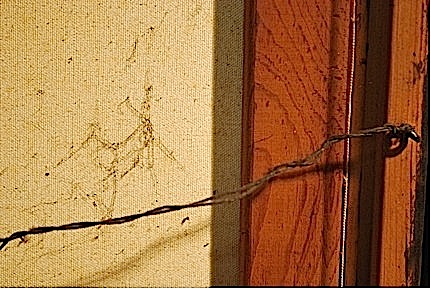
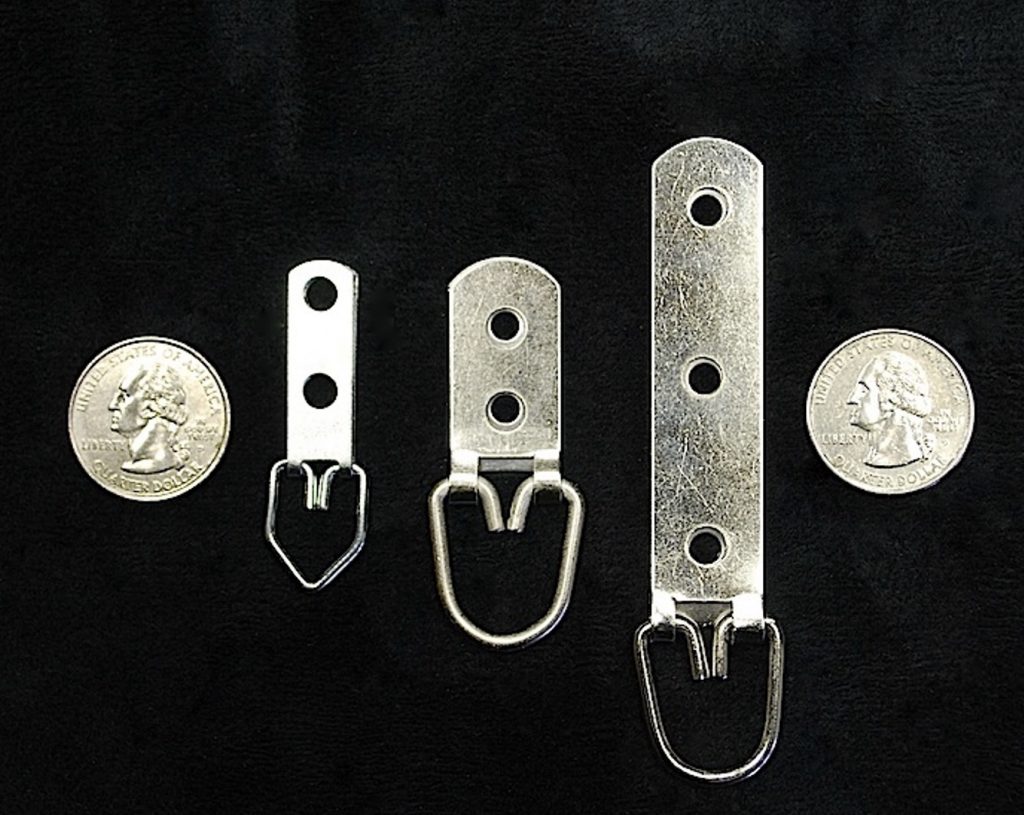
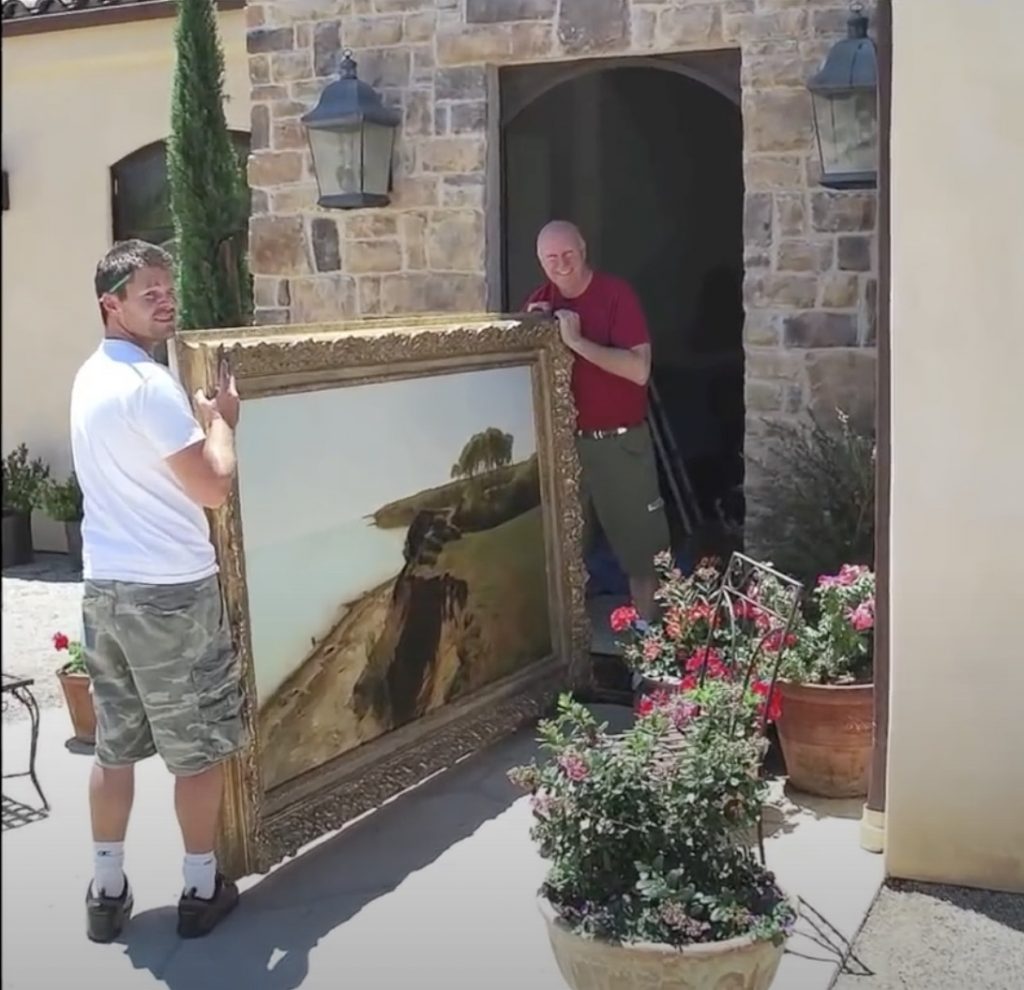
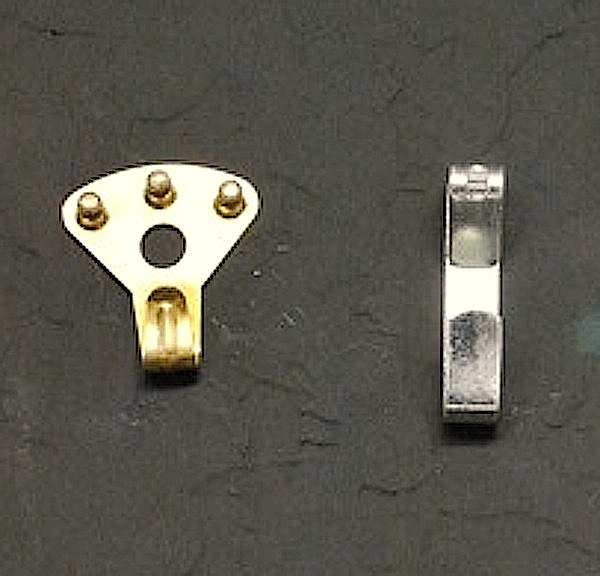
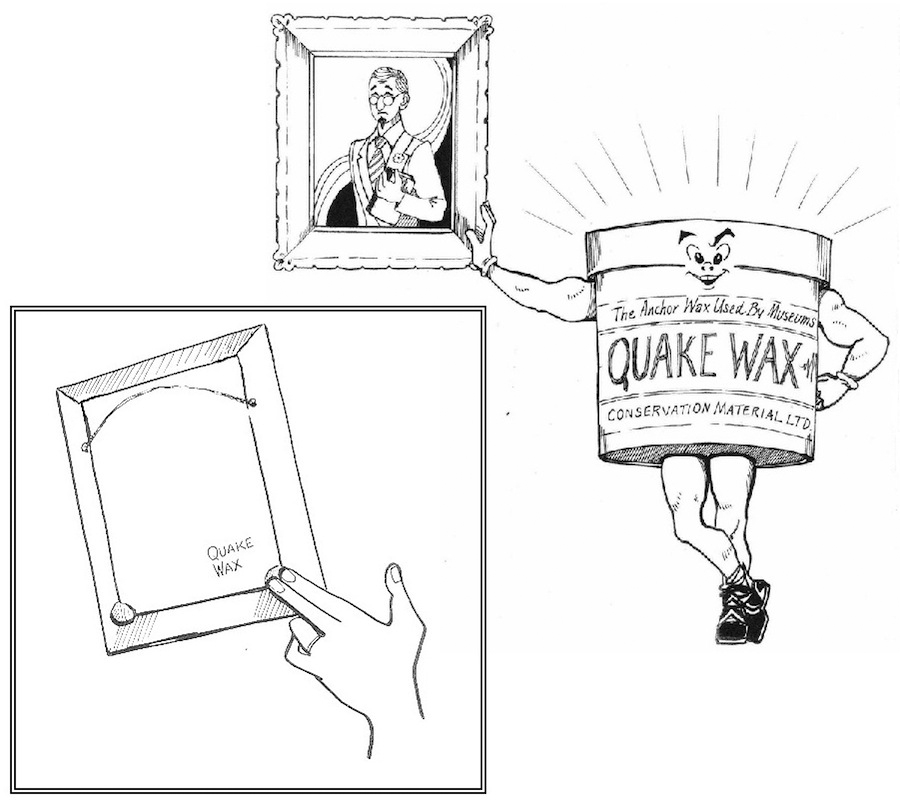

Thank you for this extremely helpful information. Living in California means having a healthy respect for mother nature- earthquakes- is key in protecting art to be sure. Really appreciate the specifics regarding your preferred hooks.
Absolutely Dee Anne… in fact the CA “Shakeout drill” was last month. Thanks for the comment.
I have a couple of questions. First, I was given an old painting that is signed “Matisse” but it does not look anything like his style. It was my grandmothers and I don’t know where she got it, so there is no “paper trail”. She only said it was a gift. Since it doesn’t resemble his style at all, is there any point to having it appraised? It’s very well done but it’s just a vase full of brushes, with a small picture of a sailing ship on the vase, and a copy of what looks like a photo of the portrait he did of his wife, tacked to the wall behind the brushes. It has a lot of orange in it, and a patterned cloth on the table that the vase sits on. I read somewhere that he often painted a life-like painting and then painted over that in impressionist style. I don’t know if it’s true.
My other question is about finding a program to train me to propertly conserve old frames. I recently got a gesso frame that was made in the early 1800s (I believe), and it has various colors in the gold. Some looks almost like bronze and some more gold. There are pieces broken off on some of the flat surfaces but only one part on the design that I’ve found so far. I have collected frames for years and didn’t pay much attention to how I “restored” them. I would love to learn to do it properly, even if it means going back to college to do it.
Ellen,
Thanks for your questions. I don’t know of a training program for the restoration of frames. Give me a call and we’ll discuss it. Scott 805 564 3438 office